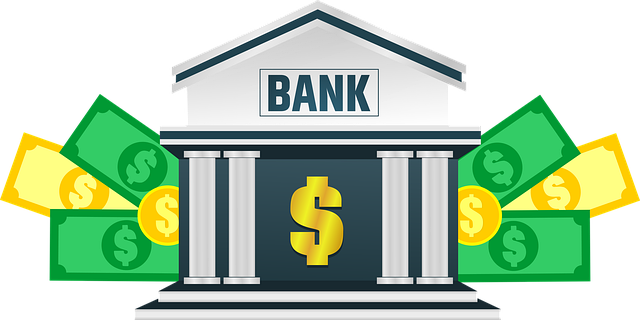Prepayment terms in alternative loans are crucial for borrowers to understand as they significantly impact repayment schedules and costs. These terms vary widely among lenders, ranging from strict deadlines with penalties to flexible options with minimal restrictions. Borrowers should carefully review prepayment rules to align repayments with their financial plans, save on interest, and avoid unexpected fees. Lenders benefit from predictability and security, fostering trust and encouraging responsible borrowing practices. Understanding prepayment structures, including fees and penalties, alongside interest rates is vital for making informed decisions about the best loan terms for individual needs. Transparent communication regarding prepayment policies benefits both parties in the alternative lending landscape.
Understanding prepayment terms is crucial when navigating alternative loans. This article delves into the intricacies of these provisions, explaining their significance in a non-traditional lending landscape. We explore key components, their impact on borrowers and lenders, and common scenarios. Learn best practices to navigate prepayment conditions, ensuring informed decisions that align with your loan terms and financial goals. Discover how understanding these structures can empower both parties.
- What are Prepayment Terms?
- Why Prepayment Provisions Matter in Alternative Loans
- Key Components of Prepayment Structures
- Impact on Borrowers and Lenders
- Common Scenarios and Examples
- Best Practices for Navigating Prepayment Conditions
What are Prepayment Terms?

Prepayment terms refer to the conditions and rules that govern how much, when, and under what circumstances a borrower can repay their loan in advance. These terms are crucial aspects of alternative loans, often offering borrowers more flexibility compared to traditional bank loans. In today’s market, many lenders provide options for early repayment without penalties, allowing folks to navigate their loan terms more effectively.
Understanding prepayment terms is essential as it directly impacts the borrower’s financial burden and overall loan cost. Some loans may have specific deadlines or require notice before repayment, while others might allow partial or full prepayment at any time with minimal restrictions. Borrowers should carefully review these conditions to ensure they can manage their repayments according to their financial plans and avoid any unexpected fees.
Why Prepayment Provisions Matter in Alternative Loans

Prepayment provisions play a crucial role in defining the flexibility and overall health of an alternative loan. These loan terms allow borrowers to repay their debts ahead of schedule, which can have significant implications for both parties involved. For borrowers, understanding prepayment options is essential as it empowers them to manage their finances effectively. By repaying early, individuals can save on interest charges, potentially reducing the total cost of borrowing. This is especially beneficial in the alternative loan sector, where rates may be variable or higher than traditional loans.
Lenders also benefit from clear prepayment policies as they provide a level of predictability and ensure the timely recovery of funds. In the dynamic nature of alternative lending, where loan terms can vary widely, having robust prepayment provisions offers transparency and protection for both borrowers and lenders. This mutual understanding of repayment conditions fosters trust and encourages responsible borrowing practices.
Key Components of Prepayment Structures

When considering alternative loans, understanding prepayment structures is paramount. These structures vary significantly from traditional loan terms and can impact your financial strategy. Key components to focus on include prepayment fees, penalty charges for early repayment, and the overall flexibility of repaying the loan ahead of schedule.
Prepayment fees are designed to protect lenders against potential losses if borrowers decide to pay off their loans prematurely. While these fees vary by lender and loan type, they can eat into savings and should be carefully considered. Additionally, penalty charges for early repayment, though less common, can add unexpected costs if you choose to pay off your loan before the specified term ends. Assessing these factors alongside interest rates and repayment terms will help borrowers make informed decisions tailored to their financial goals.
Impact on Borrowers and Lenders

Prepayment terms in alternative loans significantly influence both borrowers and lenders, shaping their financial experiences and strategies. For borrowers, flexible prepayment options can offer relief during unforeseen circumstances or when they’ve secured better interest rates elsewhere. This empowers them to manage their debt more effectively and save on interest costs. However, it also means they might not fully utilize the loan period, potentially impacting their credit history. Lenders, on the other hand, must consider prepayment penalties to offset the risk of early repayment and ensure revenue stability. These penalties can be a deterrent for borrowers but are designed to protect lenders from revenue loss associated with shorter loan terms.
Understanding these dynamics is crucial when navigating loan terms. Borrowers should review prepayment conditions thoroughly to avoid unexpected fees, while lenders must strike a balance between attracting customers with flexible options and safeguarding their financial interests. This delicate equilibrium ensures a fair lending environment where both parties benefit from transparency and clear communication regarding prepayment policies.
Common Scenarios and Examples

In the realm of alternative loans, prepayment terms can vary greatly depending on the lender and loan type. Common scenarios include borrowers who want to pay off their loan early due to improved financial circumstances or those who need to adjust repayment plans mid-term. For instance, a borrower taking out a personal loan to consolidate debt might opt for a prepayment plan that allows them to pay off the entire loan balance within a few years, saving on interest. Alternatively, a business owner using an SBA loan could choose to make partial prepayments to reduce the remaining principal and lower monthly payments, providing flexibility during cash flow fluctuations.
Understanding these scenarios is crucial when considering loan terms. Lenders may offer various options for prepayment, such as no penalty fees or reduced rates for early repayment. Some loans might even allow borrowers to set up automatic prepayments through direct debit from their bank accounts, simplifying the process. Familiarizing oneself with these possibilities can help borrowers make informed decisions, ensuring they navigate their loan terms effectively and potentially save money in the long run.
Best Practices for Navigating Prepayment Conditions

When navigating prepayment conditions in alternative loans, it’s essential to understand and adhere to best practices that protect both borrowers and lenders. Start by thoroughly reading and comprehending the loan terms, ensuring clarity on penalties or fees associated with early repayment. This transparency is key to avoiding surprises down the line.
Next, assess your financial capabilities before making any prepayments. While prepaying can save interest costs, it’s crucial to ensure these actions don’t strain your budget. Creating a financial plan that incorporates loan repayment while allowing for unexpected expenses is wise. Regularly reviewing and adjusting your repayment strategy based on changing life circumstances or market conditions is also recommended.






